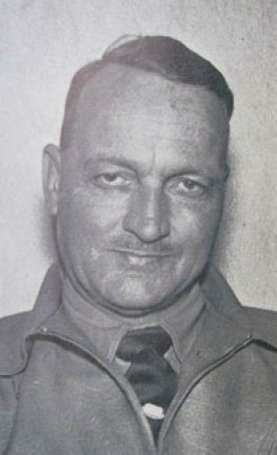To Read, Or Not To Read…Not Even a Question
My wife, Frances, suggested that I Google titles for my newly-formed, and hopefully recurring, category of posts highlighting favorite books. I found the following: ‘I Like Big Books and I Cannot Lie’ and ‘Lit Happens’. I loved both titles. However, there was a suggestion made that I had another opportunity to choose. I could settle on such a tacky title and sleep alone, or be mature and sleep with my sweet wife.
So, welcome to the inaugural - To Read, Or Not To Read…Not Even a Question.
This past week’s theme was definitely Africa-centric. I'm going to stay with that template for the beginning of this week with an abstract on John ‘Pondoro’ Taylor’s African Rifles and Cartridges. The first edition of Taylor’s classic text appeared in 1948, but even today many writers are referencing his conclusions in support of their own findings. Craig Boddington (https://www.craigboddington.com/), for example, often refers back to Taylor when discussing large calibers designed for dangerous game.
In a recent review (appearing in Africa's Sportsman Magazine, September 2019), I too turned to Taylor when discussing my results from a review of a Verney-Carron double rifle chambered to the venerable, .450-400 3" Nitro Express. In particular, though known as a hunter who advocated the heaviest calibers for hunting dangerous game, Taylor had only great things to say about the relatively mild-mannered .450-400 3" N.E. He stated, “I’ve done a lot of shooting with the .400…I killed practically all species of African game and my experience was such that I would not hesitate to follow any dangerous animal into any sort of cover if armed with a double [.450/.400].” And, again, “Just because a [.450/.400 or .404 Jeffery] looks small when compared with an 8-bore, or even a .577 is no argument…practical experience has shown that it’s a simply splendid weapon for all heavy and dangerous game anywhere…” (Taylor’s emphasis)
John ‘Pondoro’ Taylor
The continuing attention of readers and writers, after 70+ years, suggests that there might be a combination of factors that transformed African Rifles and Cartridges into a ‘classic’ of the hunting and shooting genre. Some of the possible factors include:
The author’s knowledge of his subject
The time period in which publication took place
The public’s interest in the topic
The quality of the writing
The publicity provided by subsequent, well-respected, authors
I have published four books on subjects related to my work as a research geneticist. I have also reviewed book proposals and published works by other authors. Of course, not a single one of these science texts share topics (or the size of readership!) with African Rifles and Cartridges. However, I believe that I may be able to use my experiences to provide some educated guesses as to why Taylor’s magnum opus has been so influential for such an extended period of time. For brevity’s sake, I will address only points 1 and 2. I will revisit 3-5 in future discussions of other classic shooting and hunting texts.
Taylor possessed an enormous data set from which he derived his knowledgeable conclusions. Though his conclusions resulted from both theory and observation, he mainly relied on witnessing how the various rifles and cartridges had performed in his own hands. His theoretical data were provided by rifle manufacturers who provided the ballistics, etc for various cartridges. He also relied somewhat on reports from other experienced hunters to provide the reader with assessments of how a caliber should perform on a certain category of game animal. I think it is apparent that Taylor possessed extensive knowledge, obtained largely through his own exploits, but also from manufacturers and colleagues. This was the basis for the host of well-supported conclusions presented inAfrican Rifles and Cartridges.
I actually think of this as ‘right-time-right-place’. This factor is a bit harder to understand, except in retrospect. My best-ever cited book (in science terms, that means more than just my family knew it appeared...) was published in 1997. It was an accident that the timing was perfect. The concepts and paradigms discussed were at the edge of our understanding of how the biological world may have developed. So, it received a very good amount of visibility. What about Taylor’s masterpiece? The same can be said, on steroids. Teddy and Kermit Roosevelt’s epic Safari, Ernest Hemingway’s Green Hills of Africa Safari, and the end of World War II proceeded Taylor’s publication by ~ 40, 15 and 3 years, respectively. Each of these events led to an upsurge of interest in all-things Africa, particularly hunting. It would seem, looking past the publication date of Taylor's classic, that he not only rode the wave caused by these paradigm-shifting journeys and conflicts, but caused his own Tsunami of interest by describing to African Hunting enthusiasts how they should be armed. As an aside, I wonder if Taylor - along with other notables like J.A. Hunter - was not also responsible for the fact that all of us who have since gone on our own Safaris felt naked when we didn't enter the African bush with a double rifle. Regardless of Taylor's intent, for a description from someone who was there during the final transition from black powder to smokeless and who was there during the epic pursuits for elephant and other game, I hope you will take time to digest for the first, or 40th, time this classic text.
(Lest I leave anyone with the idea that I see Taylor’s African Rifles and Cartridges as the last word on such topics, I do not. That honor must go to Craig Boddington and his Safari Rifles and Safari Rifles II. But, more about that in future posts.)


